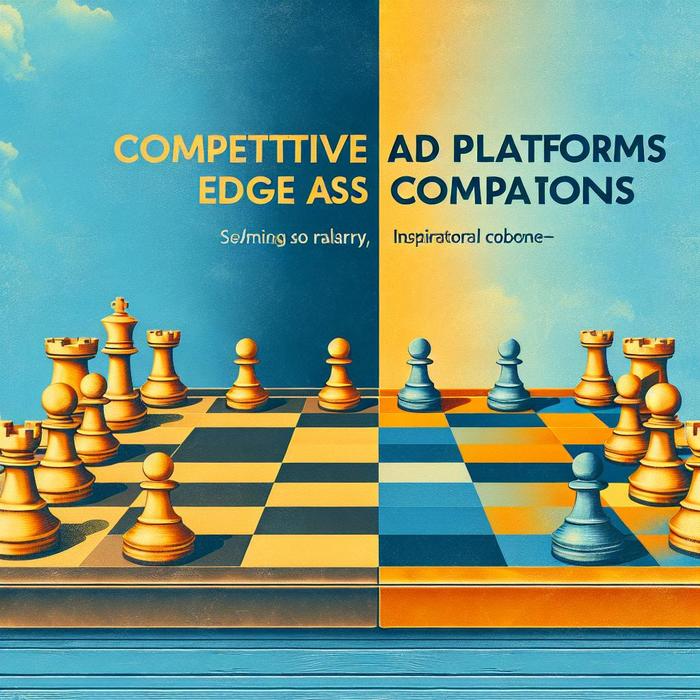Google and Meta: Powerhouses of Digital Advertising Unveiled
Exploring the Power of Google
In my years as a digital marketing expert, I’ve seen countless advertising campaigns unfold across diverse platforms. Google, the unrivaled search engine titan, has consistently emerged as a top choice for executives targeting comprehensive visibility. Leaders in the marketing world, like Chief Marketing Officers (CMOs) and Chief Growth Officers (CGOs), widely recognise Google’s PPC strategies as a trusted mechanism for long-term success.
Leveraging Google’s unparalleled reach, savvy leaders have effectively bid for impressions of high-potential prospects. Google’s advanced algorithms enable a seamless, intelligent bidding process, targeting users based on their long-term value (LTV) to the business.
Through my own experiences, a key to success on Google lies in the unique ability to connect businesses to information-hungry users at the peak of their interest. This advantage can drive higher conversion rates, leading to a tangible impact on the bottom line.
Meta’s Advancements: A Game-Changer
Moving from the search engine giant to the realm of social media, let’s turn to Meta (formerly Facebook). Over the years, Meta has developed innovative approaches to digital advertising that have created a paradigm shift in the industry. My journey with Meta, like many executives, was marked by the excitement of leveraging an evolving platform to reach an expansive audience base.
Meta provides a level playing field for businesses, regardless of size or industry. In particular, Meta’s advertising algorithm optimizes for real-time LTV, which has significantly changed my approach to campaign management. By pushing this LTV information back to Meta, businesses can better strategize their ad placements using platform-native algorithms. This, in turn, translates to more efficient spending and maximized ROI.
For a closer examination of crafting multi-channel campaigns on Meta, take a look at this comprehensive comparison on Meta versus Google insights.
Google vs Meta: A Comparative Analysis
As veteran digital marketers, we’ve all experienced the competitive thrill between Google and Meta. But which platform gives us the strategic edge?
- Reach: Google’s extensive reach across the globe is undeniable. Yet, Meta’s network, spanning Facebook, Instagram, and WhatsApp, presents a substantial user base that is too significant for marketers to ignore.
- User engagement: Meta’s engaging social media interface fosters a more personalized interaction with the audience compared to Google’s more informational-centric engagement. This distinction can play a significant role in shaping your brand’s online presence and reputation.
In the heat of this digital advertising showdown, it is essential to stay informed of the ever-evolving landscape of Google, Meta, Amazon, and YouTube in advertising.
It’s All About Strategy
In the end, it’s not just about selecting the most popular platform but finding the right strategic fit for your business. As a marketer, I’ve found that blending the strengths of Google’s search prowess with Meta’s advanced targeting can create a powerful synergy.
Remember, with ever-brilliant prospects on the digital advertising horizon, you must keep your finger on the pulse of the industry. Whether it’s Google’s dominance in search or Meta’s innovative social media interfaces, understanding the nuances of these platforms can put you at a competitive advantage.
Are you ready to dive deeper into the world of digital platform comparisons? Be sure to check out the latest strategies on TikTok’s new LTV campaign at TikTok’s New LTV Campaign Strategies.
Adopting a holistic approach to digital advertising, harnessing the strengths of different platforms, and injecting a healthy dose of creativity can help transform your brand from just another competitor to an industry leader. Remember, in the world of digital advertising, the only constant is change itself.
TikTok: The Rising Digital Advertising Star
Over the past few years, a new player has stormed the digital advertising arena – TikTok. As a platform, TikTok has become a force to reckon with, particularly due to its appeal to younger audiences, a demographic that has presented as elusive to marketers.
My first foray into TikTok was an enlightening experience. The platform presented a fresh marketing canvas, its short-form video content format pushing the creative boundaries for advertising. With its cleverly designed algorithm, TikTok provides a platform where every video has an equal chance of going viral—making the user experience incredibly addictive.
As a digital marketer, an understanding of platform-specific user behavior is essential. On TikTok, people come to be entertained, inspired, and to discover new things. This offers advertisers a unique opportunity to engage users with innovative content that adds value to their experience.
Google vs TikTok: A Fresh Perspective
Comparing Google and TikTok as advertising platforms, presents us with a fascinating study in contrasts that can greatly inform our ad strategy.
- Content Form: While Google primarily excels with text-based content and reaching users who are actively seeking information, TikTok thrives on video content and engaging users in a more passive, leisurely browsing mode.
- Target Audience: Google caters to a wide range of user demographics, whereas TikTok tends to draw a younger user base. Accordingly, the nature and style of advertising content will significantly differ across Google and TikTok.
Despite pivoting towards a more visual-centric approach, Google’s ads still primarily focus on answering a user’s specific query. On the other hand, TikTok’s ad strategy is about creating compelling content that effectively marries brand messaging with entertaining narratives.
Navigating the world of TikTok ads Vs Meta ads Vs Google ads can be complex, but a profound understanding of each platform’s strengths can greatly inform your ad strategy.
Meta vs TikTok: The Battle of Engagement
Referring back to my experiences with Meta and comparing it with my mileage on TikTok, I noticed a pivotal advantage that Meta has held for a while – data availability. Serving the digital community for almost two decades, Meta has managed to gather extensive demographic and behavioral data. This facilitates ultra-targeted campaigns, thereby maximizing conversion probability.
On the other hand, while TikTok is relatively younger, it brings to the table the power of virality. Its algorithm is designed to show content that aligns with users’ likes, thereby increasing overall engagement and potential reach of the campaign. This unique structure, coupled with the rawness and authenticity that characterizes TikTok content, can lead to greater user engagement.
Finding the Right Balance
For executives deciding between Google, Meta, and TikTok, the choice largely hinges on their unique business objectives and target audiences. In my view, rather than picking one advertising platform over the other, the best approach involves exploiting the strengths of each one.
For instance, Google’s massive reach and superior search capabilities are ideal for targeting a wide demographic, while Meta’s nuanced targeting options cater well to niche customer segments. Meanwhile, TikTok serves as the perfect platform to attract a younger audience with creative and engaging marketing messages. The real trick lies in balancing these powerhouses to build a robust and effective multi-platform digital advertising strategy.
Keen to learn more about leveraging these platforms in your ad campaigns? Check out this insightful piece on the eCommerce marketing journey, focusing on search and brand-based strategies.
At every turn of my journey in digital marketing, I’ve observed how advertising platforms continue to evolve, promising new avenues for brand communication and engagement. As we look ahead, new developments in this constantly shifting domain beckon exciting times for marketers, providing grand new stages to tell our brand narratives.
Remember, the enduring mantra in the sphere of digital advertising is not to resist change, but to embrace it. With every evolution and shift, there are newer and bigger opportunities to discover, reinvent, and prosper.


